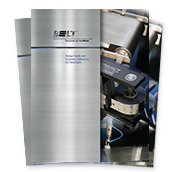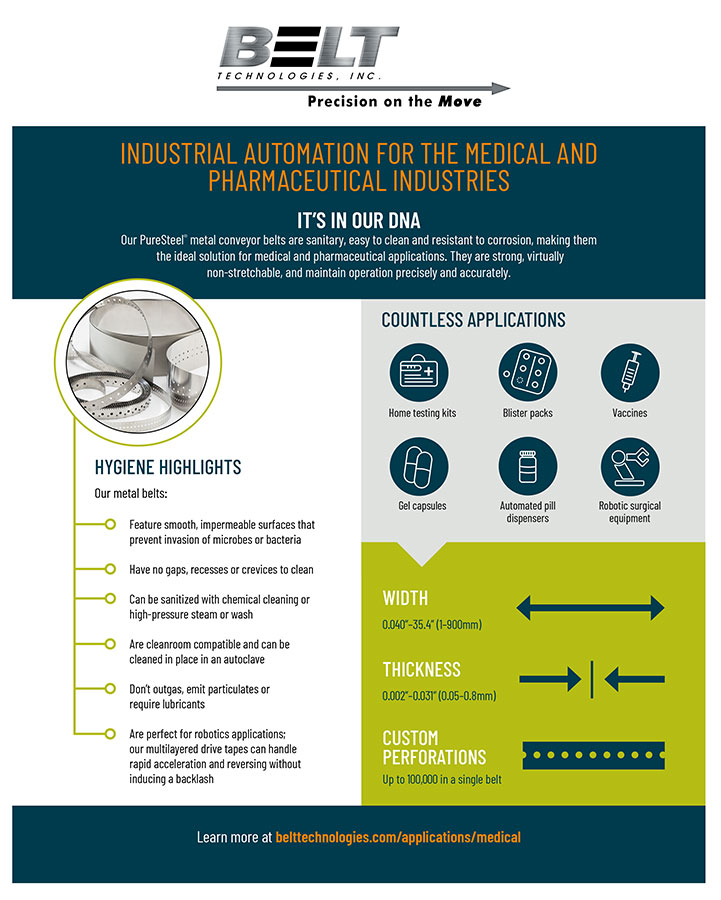A stainless steel belt is considered “wide” when it is between 22 to 35 inches in width. Wide belts require particular consideration to produce and are traditionally made with thicknesses of 1 millimeter or greater to preserve belt integrity. At Belt Technologies, one of our core strengths is our ability to produce wide metal belts from thinner materials.
Recently, our engineers were challenged to provide a returning customer with an enlarged version of a belt we produced for them on another project. The belt was to be used to transport large groupings of zip ties. Because these zip ties would be larger than the products made in the previous system, the customer needed to scale up the size of the conveyor belt as well.
Zip Tie Production Challenges
The customer’s conveyor system needed to transport clusters of zip ties through a laser cutting process to be separated. The belt had to have a series of perforations to allow the laser to cut the zip ties without damaging the belt; after cutting, any unnecessary zip tie parts had to fall through to be discarded. This made proper positioning of the product an important factor.
Wider belts tend to be more sensitive to negative tracking forces. Stainless steel belts are virtually non-stretchable and do not yield under tension, which can make belt tracking more challenging.
Wide Metal Belts Are Easily Customized for Your Application
Our engineers provided the customer with a stainless steel conveyor belt that was 30 inches wide and 0.381 mm thick. While most manufacturers can only produce wide metal belts with a thickness of 1 mm or greater, Belt Technologies has the capability to produce wide metal belts with thicknesses ranging as low as 0.076 mm and up. Using a thinner material makes it possible to reduce the system pulley diameter, thereby saving space, reducing inertia, minimizing cost, and achieving a smaller overall system footprint.
We also provided the customer a V-Guided tracking system. This system would prevent the belt from gradually moving off track and would reduce the downtime required for routine axis adjustments. Our V-Guided Metrak© belt tracking system ensures even distribution of tracking stress on the V-belt—rather than the conveyor—and guarantees maximum belt lifespan.
Using our in-house laser perforation services, our engineers added long, rectangular perforation slots to this particular belt. The slots created spaces where the laser could cut through the zip ties without damaging the belt. They also created room for the discarded zip tie materials to fall through.
An optical positioning system that includes additional perforations along the edges of the belt helps to ensure proper indexing of the belt. Our engineers helped the customer determine the proper placement for the perforations to ensure the integrity of the belt.
The customer successfully installed the new belt in the existing system and was very satisfied with the results. To find out more about how we can customize wide metal conveyor belts for your automation application, contact us today.



